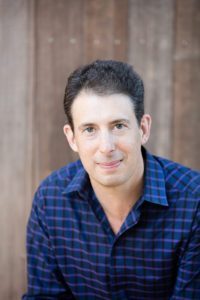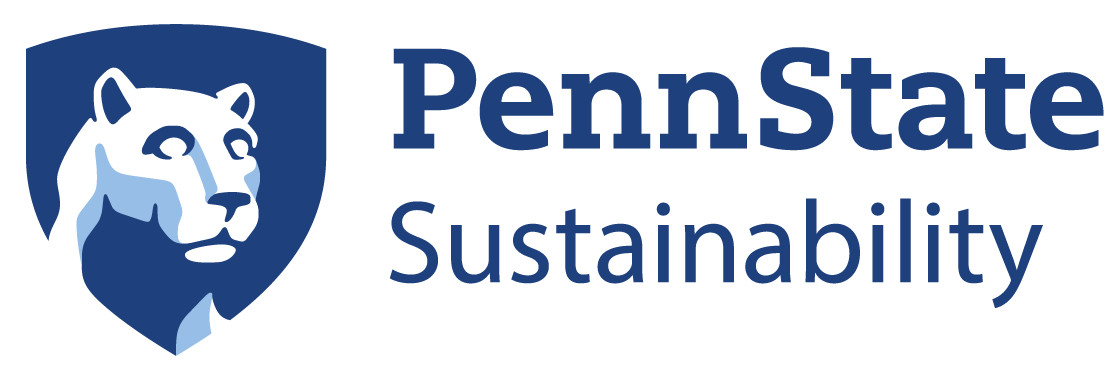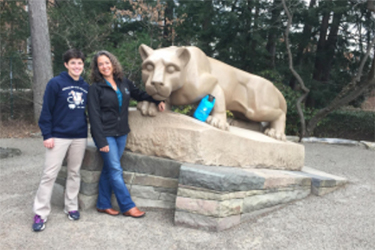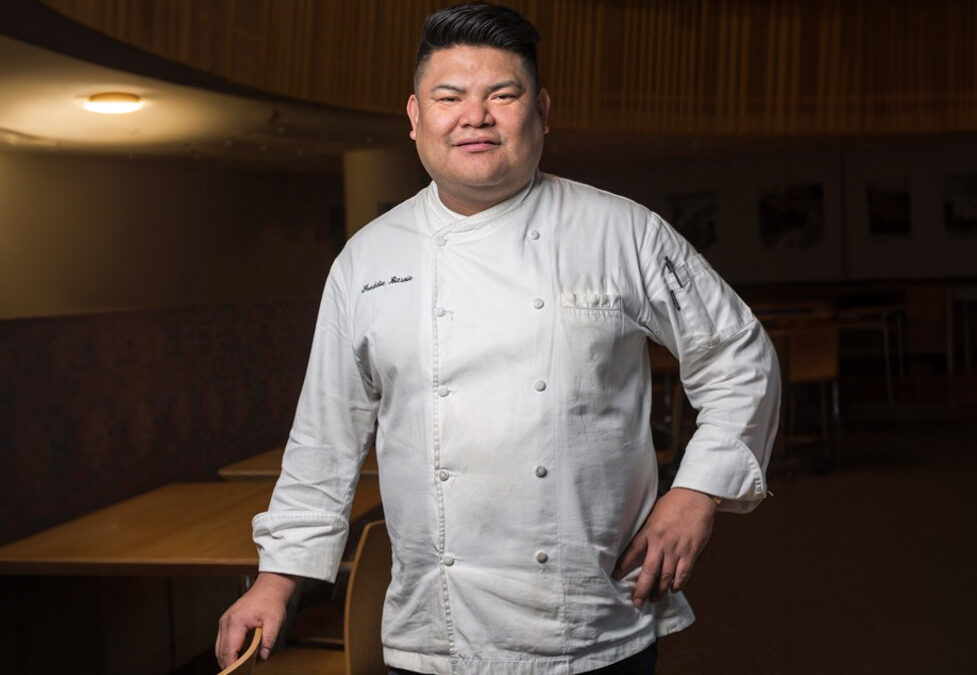Eric Klinenberg, author and Helen Gould Shepard Professor of Social Science and director of the Institute for Public Knowledge at New York University
Eric Klinenberg, author and Helen Gould Shepard Professor of Social Science and director of the Institute for Public Knowledge at New York University, is Penn State’s 2024-25 Colloquium on the Environment keynote speaker. Klinenberg’s talk expands on his bestselling book “2020: One City, Seven People, and the Year that Changed Everything,” which explores lessons from the COVID-19 pandemic about how sociological factors intersect with health outcomes.
As a sociologist, Klinenberg has explored the many ways in which social connectedness, or lack thereof, has affected people’s health, happiness, and sense of well-being, while also impacting our political polarization. He is also the author of “Palaces for the People: How Social Infrastructure Can Help Fight Inequality, Polarization, and the Decline of Civic Life” and “Heat Wave: A Social Autopsy of Disaster in Chicago,” among other books, as well as co-author with Aziz Ansari of the New York Times #1 bestseller “Modern Romance.” He has contributed to The New Yorker, The New York Times Magazine, Rolling Stone, and This American Life.
(This conversation has been edited for length and clarity.)
“2020” is an incredible book about a time that many of us would rather forget. And yet your use of storytelling makes this book compelling and relatable. Researchers and scholars often disappear behind the data to gain credibility, but data hasn’t managed to influence public perception on some of the most challenging issues of our time. Has your success as a writer changed the way you encourage students to share their findings?
I’m a scholar, I’m a social scientist, and I care about the facts and analytic rigor and developing strong theories to make sense of the world. But I also believe that scholars need to think more about how we communicate and engage different audiences or persuade people who might not share our beliefs.
So, throughout my career I’ve thought about what kinds of writing styles feel inviting, and what kinds feel alienating to a variety of readers. And from the first pages of my first book about a heat wave in Chicago, I made a decision to share some parts of my own experience that would establish for readers the fact that I, too, am a human being—embodied and vulnerable, and capable of experiencing the world just like everybody else.
A distinctive aspect of sociological ethnography is that you, as the researcher, are both the analyst and the tool of analysis. In other words, if you do observational research or in-depth interviews that require adjusting to the people you speak with, you are the instrument of research, and so it matters who you are, in terms of your access to different people and places.
I adamantly deny the view that you have to be a specific identity in order to understand other people. But I also recognize that who I am, and who the people I am studying are, shapes the interaction and the knowledge that comes from it.
I don’t want my books to be about myself, but I always want to establish that I’m part of the thing I do. So in this book, I start with a conversation I had with a medical doctor, who had a profound insight about how the emergence of Covid transformed the most fundamental way we relate to the world: through breathing.
That really touched me and got me thinking about the experience in a new way. And then I also related a story about my own family grappling with the virus and illness in the early days of the pandemic, and that inevitably shaped my understanding of what was at stake.
I don’t necessarily insist that students write that way. I think they have to write in a way that feels right to them. But I also think that in many cases, if you do the kind of work that I do, and that many of my students do, it’s quite useful.
You’ve been open about your views for years—in opinion columns, on social media, and as a guest on numerous podcasts. And yet, so much of what makes your work powerful is the way you manage to build trust with people, even those with very different perspectives than some you’ve expressed publicly. In a time when it is so challenging to disagree with each other, how do you earn the trust of those who regard you as the “other side?”
Partly, it’s just presenting yourself as a human being who also confronts difficult choices and problems. And in the interactions that constitute my research, I try to find points of commonality and be relatable.
There are, of course, ideological or political differences that I have with people that could block us from good communication if we started with our disagreements. But if we start with our love of a sport, or the challenges of being a parent, or what’s going on with the weather these days, it’s easier to make those connections.
This is something I thought a lot about when I wrote “Palaces for the People,” which came out in 2018. We’re often able to bridge divisions by having recurrent interactions with people around things we enjoy doing, or speaking about, even if we disagree.
Trust doesn’t come automatically. The default these days, especially if you’re an expert, is to have others be distrustful of you. But when I do research, I’m not there to project myself, or my deep views, or to promote an ideology. I’m really trying to listen and understand. So, I ask a lot of questions and try to make sure the person I’m speaking to knows that I’m interested, and that I care.
It’s remarkable how nerve-racking it can be at first to ask questions, but also how extraordinary it is to see that people generally enjoy having others be interested in them and want to hear their stories.
That said, one of the most dramatic moments in “2020” is the story of a person who really lost trust in me, which I’ve since written about. This was someone who, when 2020 started, was relatively uninterested in politics and did not have strong views about Team Red or Team Blue, or what was best for America. Over the course of the year, he got quite radicalized on the right, and came to see me, I presume, as an ideological adversary and cut me off. He still hasn’t re-engaged with me, despite my many attempts to speak to him.
I’ve experienced some pain around that, because I would like to maintain the conversation. But I also worked very hard in the chapter I wrote about him and his experience to be as empathic as possible, and to present his story the way that he saw it, so that if he read it, he would feel like it was a good representation of his experiences and views. And that was hard to do, because I do not share his view of the politics of Covid. But it felt really important to me.
I had colleagues who were very concerned when they read the chapter, because they thought it came across as if I was excessively sympathetic. And some really wanted me to make it clear to readers that I personally strongly disagreed with his view or condemned it. But I thought that would defeat the purpose.
I want readers to be able to understand why so many people had the kind of experience that this man had, and why so many Americans got radicalized on the right over the course of 2020. And as we can see now from the vantage of 2025, that was an important social change that took some time to come together.
In “Palaces for the People,” as in so much of your work, you make a strong case for the power of social infrastructure to address societal problems. You have the data, you have the historical context, you have the personal stories. And yet, there’s consistently a lack of political and financial support for invaluable examples of social infrastructure like libraries and green spaces. It would be so easy to become jaded. How do you help your students stay motivated to keep shining a light on potential solutions to these overwhelming problems? How do you stay motivated?
Honestly, I think the students motivate me more than I motivate them. I see young people who feel like they have a lot at stake in what happens politically do amazing things on a daily basis, and that gives me some sense that there are real possibilities ahead. I try to provide some useful guidance and clarity about how society works. I want my work to illuminate possible forms of action that would help us out.
Of course, there are some things about young people today that concern me. It’s not all inspiring. I’d rather not see so many screens out while I’m trying to give a lecture. I get nervous about some of the shifting voting patterns. And I really worry about the financial pressure that we have put on this rising generation with things like student debt, because so many young people feel like they have to turn college into a credentialing experience for their job, which calls the whole enterprise into question. But despite the challenges and threats they face, they’re doing some amazing things.
There’s a chapter in “2020” about the experiences of people in their 20s during the pandemic, and I thought a lot about this debt we owe to them because of all the sacrifices they made in the name of public health and the collective good. Younger people really had much less to worry about in terms of their personal health. They had good reasons to feel like being asked to stay indoors and out of school and out of the office and out of the gyms and bars and concert venues was dragging down the quality of their lives. After all, we typically think of our 20s as a time for social experimentation and for building relationships, exploring the world and learning about yourself. It’s an important time, developmentally, and we deprived younger people of that for a very long time. And we didn’t even really say “thank you” afterwards. So, I think we owe them a debt.
I see a lot of young people who feel kind of down and skeptical and worried today, and I understand those feelings. But I also see a lot of young people who managed to get up and keep working hard, so I guess that inspires me more than anything.
In “Palaces for the People,” you also contrast social bonding and social bridging. Could you talk a little bit about what that might look like on a college campus? How can students help to create the conditions for social bridging as opposed to mere social bonding?
First, I’ll define the terms a little bit. Bonding is the development of social ties and connections. And it’s often lauded as an important goal for collective life. It helps to reduce the experience of social isolation. Bonding can be really helpful for people who are fighting to stave off loneliness. It can provide a sense of belonging and security and establish lines of social support.
While bonding is crucial, it doesn’t always turn out to be inclusive, and it’s not always an equalizing force. In fact, sometimes it’s the reverse.
To take a university example, the Greek system is set up for bonding. People live in shared houses. They have special parties and lots of activities together, and also formal events and job networks. These brotherhoods and sisterhoods can be really anchoring for people.
But fraternities and sororities tend to exclude much more than they include, and many people feel that very acutely. There’s a history of the Greek system explicitly not allowing certain people to be included, and that continues to great extent today. In the book, I question whether universities should still support the Greek system at all, even while recognizing just how much of people’s loyalty to their schools is tied up in their feelings about their fraternities and sororities. So, bonding has its limits.
Bridging is a very different thing. It’s about helping people from different walks of life build ties to one another. And I think it’s been in shorter supply these days.
When people talk about polarization, ideological or affective, they are referring to this experience of people not trusting others who are different. Increasingly, Americans see their political adversaries as enemies, and maybe even enemies of the people. It’s become a real concern for anyone who cares about our capacity to promote the common good.
So “Palaces for The People” has a lot to say about the kinds of places that can work better as bridging social infrastructure, such as playgrounds and soccer fields and libraries. And all those things, or things like them, are on college campuses.
After my book came out, NYU’s library director transformed the very famous, architecturally significant entry space for the Philip Johnson-designed library. It had a black-and-white checkered marble floor and was very spare and bare and impressive—but empty, because it was just a place you’d want to walk through.
They took an unused exhibition space that was next to it and transformed it into social infrastructure. It now has nice carpeting, and all this furniture for sitting and studying and hanging out. It’s become the most popular indoor public space on the NYU campus—a place where you can see friends or people you haven’t met before who are also studying. People kick up conversations there that wouldn’t otherwise happen. So, it’s now an amazing place for that kind of bridging activity.
I’m kind of a sports nut, myself, and not just as a spectator. I love to play games, and one reason is because they can be very social and generate all kinds of bridging opportunities. I grew up playing a lot of pickup basketball in Chicago, and I spent a lot of time on basketball courts with people I had no business hanging out with. In some cases, we built relationships, but it’s not necessarily about developing close friendships. It’s about developing a sense of mutual understanding and recognition and tolerance for each other’s differences, and an appreciation for the fact of our shared humanity and shared interests.
All those experiences I have had playing sports with different kinds of people inevitably shaped me as a researcher and interviewer. They helped me relate to people more generally.
I don’t think this kind of stuff is a panacea. I don’t think by building those relationships we get over all our problems. I just think if we want to try to rebuild democratic culture, that this kind of bridging work is the best way to begin.
You often push back against dominant narratives about “the epidemic of loneliness” or that “the internet is causing all our social erosion,” favoring instead a more expansive understanding of the way societal trends are affecting us. Most elements of sustainability are deeply complex. How do you encourage your students to invite nuance into conversations about these issues?
As an educator and parent, I’m committed to the view that a great part of being a young adult is being able to experiment with ideas and to try on stances and ways of being in the world. And I think inevitably, young people feel strongly about issues. They might come across as excessive and do things that their older self might regret, or that don’t seem to comport with the values of the professors or the parents or the school administration, and that make for spectacular headlines and gotcha moments on certain media.
I feel like all of us older people in the room should be more tolerant and understanding of that fact about what it is to be a young adult in a free society, where people can speak their minds. People are going to come across as excessive, and overstate things, and we don’t need to crack down on them in a punitive way and be hysterical. I think we should appreciate their efforts to try to make sense of the world.
And sometimes they push us to do better. I think about all the universities that have been divesting from fossil fuels. That doesn’t happen without young people who are really passionate about what they want to do. And if a university administration says, “Actually, we want to include the big fossil fuel companies as donors because they’re the ones who are doing renewable energy at scale, and we need their participation,” then have that debate on campus. Be open to the possibility that someone who’s an advocate for a different position is not the devil. Begin the conversation trying to listen and learn.
Part of being in a democratic society is recognizing that there are people who have different views on things. There are a lot of complicated problems. We should be able to listen to each other. Again, as a social scientist, I care a lot about evidence. And I recognize that we learn the most and come up with the best ideas when we can deal with inconvenient facts. Sometimes you only get the inconvenient facts if you listen to a range of people.
You’ve been writing about the effects of climate change and our need to adapt throughout your career. Given our current environment, where do you see the leverage points now? Where can we move the needle?
That’s really hard to deal with right now. But the world is changing, and the U.S. is not an island. Countries all over the world are working hard to decarbonize, as are many American states and cities. Even if you look at the American auto industry, it’s not at all clear that they want cuts in the subsidies for electric vehicle (EV) production, because they’re trying to appeal to consumers in other countries, who increasingly want EVs.
I think this transformation of our energy system towards renewables is inevitable. On a global scale, the world is moving in that direction. On a local scale, many big and small American communities are committed to decarbonization or getting closer to it. And many American corporations are committed to reducing their carbon footprint.
One big challenge is the emergence of AI, which is so energy intensive. And it’s now baked into all kinds of technologies that we use routinely and frequently, even if we don’t want to. If you use Google, Apple products, or social media, for example, even if you don’t opt into the AI system, AI is still operating as you search and play, and that will make the project of reducing our emissions much more difficult.
So get involved in that debate about the rollout and regulation of AI. Figure out your stance on things like small nuclear energy. Learn those issues and focus efforts on cities and states that are working hard to decarbonize despite federal pushbacks. Or focus on states or federal agencies with a lot of potential for change.
When we talk about adaptation and migration and retreat, these processes are inevitable. They are happening. It’s just a question of when and how safely. And how much damage will happen before we take it seriously. But there are so many access points for people who want to engage.






